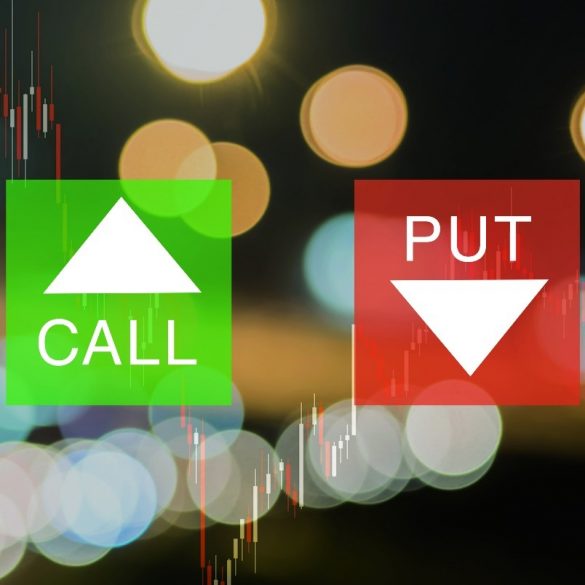Housing Bubble 2.0 is Here
The housing bubble burst in 2008… but in 2018, it’s back in full force.
Home prices are above pre-crisis levels and the force pushing them to new highs is losing strength. The housing bubble chart below shows the jump in home prices…

Source: FRED – U.S. Federal Housing Finance Agency
The next housing collapse is on the horizon. Eventually, home prices must return to normal levels. That’s why I’ve uncovered six ways to protect yourself and profit from the correction.
But first, let’s take a closer look at what’s behind the housing bubble 2.0.
Housing Bubble 2018: Borrower’s Paradise
It’s still one of the best times in U.S. history to borrow money.
The 30-year fixed-rate mortgage topped 18% back in the ’80s. But today, it’s closer to 5%. You can borrow money at a 70% discount to what it was a few decades back.
The artificially low rates have prompted folks to borrow money to buy homes. The fear of rising rates is pushing a final buying spree. As interest rates continue to rise, borrowing becomes less attractive. That’s why mortgage brokers are encouraging homebuyers to lock in low rates.
A rock-bottom interest rate is the main culprit behind the housing bubble resurgence. It’s spurred sales and pushed home prices above pre-crisis levels. Although, the Fed has turned off the cheap money tap.
The new housing bubble won’t sustain as cheap debt disappears. Home buying demand will fade and this is just one reason to be cautious.
Lending standards are a little better today than they were in the early 2000s but they’re still not great. Lenders and brokers still have plenty of ways to pass the buck.
Mortgage brokers work on commission. Their job is to close sales, whether or not those sales are financially sound. When a broker sells a house, the mortgage on that house is often repackaged into a security with other mortgages. Then it’s sold to other investors. The risk is passed on to the next guy.
Another sign of the 2018 housing bubble is lower real median household income growth. It’s up less than 10% from its recent lows, while the home price index is up almost 25%. This divergence is unsustainable. If it continues, the average person won’t be able to afford a home in a few years.
Warning signs are now appearing and “For Sale” signs will likely follow. The housing bubble has blown above 2007 highs and a correction is around the corner.
The evidence of another collapse is piling up. This is why you should consider ways to protect yourself and profit from the next housing collapse.
Three Ways to Protect Yourself from the Next Housing Bubble Burst
- Limit Exposure: One of the best ways to protect yourself from a housing collapse is by limiting exposure to the housing market. If you own investment homes, you may want to scale back. If you’ve invested in other housing investments, it’s a great time to rebalance.
- Wait It Out: Stay on the sidelines and avoid buying new investment homes. When prices fall, you’ll be able to buy homes and real estate funds at a discount. If you’re a long-term investor, it could pay to wait until this blows over. In the words of legendary investor Jim Rogers, “I just wait until there is money lying in the corner, and all I have to do is go over there and pick it up. I do nothing in the meantime.”
- Diversify: Never put all of your eggs in one basket. Buy assets outside the housing bubble that don’t have a strong correlation to home prices. Some examples are blue chip stocks, bonds and gold. When home prices collapse, make sure you have other assets that can keep your portfolio in the green. Diversification is a key tenet of Wealthy Retirement’s philosophy.
Three Ways to Profit on Housing Collapse
Home prices will drop when the housing bubble bursts. This will send mortgage originators, home builders and insurance stocks plummeting. Luckily, an investment strategy lets you profit as they fall. Investors call it short selling.
To short sell a stock, you borrow the shares from another investor. You then sell them right away at the market price… so you get cash but are obligated to return the shares you borrowed at a later date.
If the price of the stock drops, you can buy back the amount of shares you borrowed at a cheaper price. But as the price increases, you’re still obligated to return the same number of shares.
Let’s say you want to short Apple and it’s trading at $150 per share. So you sell short one share. You borrow one share and sell it for $150 at market. Now if Apple trades at $175 in a month and you want to close the trade, you must buy the share for $175 to return it. You’d be down $25.
If Apple drops to $125 in a month and you want to close the trade, you’d buy the share for less and return it. You’d keep the difference of the $150 collected and the cost to return it of $125. You’d be up $25 and would no longer be obligated to return the share.
Short selling is a great technique to profit as stocks collapse. The following three hosing stocks have lofty valuations that tie into the housing market.
- Federal National Mortgage Association (OTC: FNMA): “Fannie Mae” is a government-sponsored business that packages mortgage loans. The 2008 housing bubble collapse hit the company hard and it hasn’t recovered much. Shares are still down more than 90% from their highs.A new collapse in home prices could be the death toll for Fannie Mae… or at least for its shareholders. Investors will flee as they realize they don’t want to be investing “partners” with the government. The government has motives other than running a financially sound business.
- Federal Home Loan Mortgage (OTC: FMCC): “Freddie Mac” is another government-sponsored business. Its situation is similar to Fannie Mae’s. The government has its hands all over the company, and investors tend to get the short end of the stick.The new administration has boosted the company’s share price with talks of privatization… but the prospects still don’t look great. Another downturn in the housing market will push the remaining shareholders even faster to the exits.
- Genworth Financial (NYSE: GNW): Genworth provides mortgage insurance products. Times are good for the business when things run smoothly… but when default rates rise, Genworth feels the pain. The last housing collapse pushed Genworth to stop paying dividends, and it hasn’t started paying them again.Another key metric for Genworth is the combined ratio. It shows how much insurance businesses pay out compared to how much they collect in premiums. More than 100% shows the business is operating at a loss. And Genworth had more than a 100% combined ratio for four years after the collapse. It’s a bad sign, and Genworth will struggle with another collapse.
The last housing collapse caught the world by surprise. Don’t let the housing bubble 2.0 catch you unprepared.
The rate of mortgage defaults shot through the roof, and home prices tanked. The collapse wasn’t just on a local level but from coast to coast.
The housing collapse destroyed the savings of hardworking families… but a few folks who saw it coming coasted through it unscathed and profited along the way.
That’s why you should take action to protect yourself and profit. Don’t let market downturns stop you from retiring early.
Are you interested in finding out if you’re on track for retirement? Try our free retirement readiness calculator.


